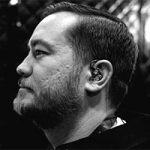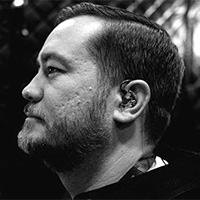Editor’s Note: This article is provided by the In-Ear Monitor International Trade Organization (IEMITO).
The call comes down. Your band is getting that big break. You will be making your television debut on a late night TV show. So let’s dive in and help you get the most from your opportunity to appear in front of hundreds of thousands — if not millions of viewers.
Being prepared beforehand will eliminate a multitude of issues that will make your big day on camera successful. Stepping into the focus brackets of the camera lens can induce a fear that feels similar to staring down the eyes of an NFL lineman. Those monoscopic wide-angle HD lenses show off more than just those extra wrinkles creeping in. So let’s help you relax and feel confident, knowing ahead of time what to expect.
This checklist will help you get ready for your big TV debut.
Your band should spend time in a rehearsal space working on the song and getting your IEM mixes locked. As on any modern stage show, whether arena or theaters, in ear monitors are a tool that provides a controlled environment by blocking out the rest of the sound around you. Your in-ears will also deliver click track and program cues.
Lock The Song In
Agree on arrangement, parts, and any tracks that will be playing along. If you’re considering extra musicians such as strings or background vocalists, decide who will convey to them what they should do and who will work up the actual paper music that they will need to read from.
Sometimes your label or management will want to have a say in some of this. Take their suggestions, but also make sure your artistic vision is upheld. You get the opportunity to make a statement to the world about your identity and vision as a band.
Lock Your Rigs In
Tidy up the pedal boards and looms. Fix those loose jacks that every once in a while, give you issues.
Decide on wardrobe and rehearse with it. This will reveal if those chain mail vests will get snagged or even block radio frequencies from getting to your ear pack.
Make sure to have backups of crucial pieces of gear. At the very minimum have a dual redundant playback rig with eight or more dedicated outputs. The 1/8-inch out on your laptop with track on the left mono and click on the right will not cut it for broadcast TV.
If your performance includes moves that are timed to the track, create a click trackand slate track — voice commands pre-recorded and dropped on a separate track for cuing song sections, dance moves, etc. — output from the playback rig available to everyone who will need it: dancers, special effects, the light board operator.
If a band member typically runs the tracks rig, hire a professional playback operator for rehearsals and the taping/performance. This will also help with any last-minute arrangement changes. They will know the best ways to create good intros, endings, and transitions.
Rehearse, Rehearse, Rehearse
One to two days of rehearsal in the days leading up to the taping is necessary.
Set up in the layout that you’ll be playing in. Tape the floor out with the footprint of the performance area of the show. Some of the logistical concerns that would have happened in the studio will make themselves known and can be dealt with well ahead of time.
Have someone video record your final few run throughs from a few different angles and analyze them like NFL game tapes. The idea is to walk into the studio with as tight of a performance as you can get.
Repeat after me. Once everything is dialed, resist all urges to introduce anything new — no matter how seemingly insignificant. That means no new pedals, cymbals, outfits, wireless, performers. Nothing.
The more self-contained and polished that your performance can be, the better it is to navigate all of the curve balls that will come up. On the day of the show, you’ll collaborate with the director and creative team but don’t veer too far from the product you perfected at the rehearsal studio. The foundation you build in the rehearsal space will always be your comfort zone in which to base off of. Making as many things as automatic as possible will allow you to entertain and engage with the audience in studio and at home.















